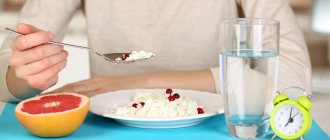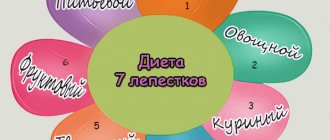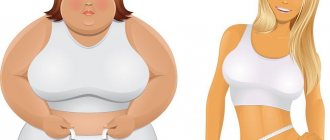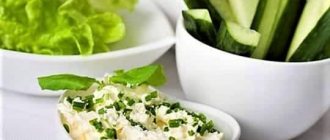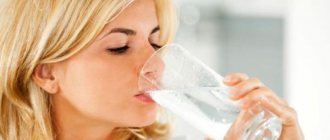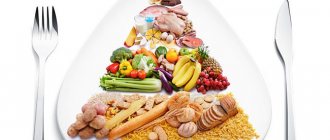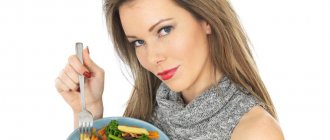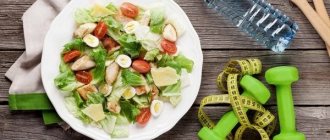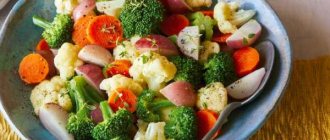Feb-16-2017 Author: KoshkaS
The zero table is also called the surgical diet. Therapeutic diet No. 0 is divided into three types and is designated, respectively, diet No. 0a, diet No. 0b and diet No. 0 c. It is in this sequence that they are usually recommended, as they continue each other. Let's consider the features, indications for use, recommended dishes for each diet No. 0.
Indications for use:
Table No. 0a is a diet that is prescribed to a person in the first days after surgery performed on the stomach or intestines. For example, gastric resection, removal of appendicitis, after other operations on the organs of the digestive system. Also indicated for use are acute gastritis and severe conditions after acute poisoning, that is, when poison enters the body through the mouth. These can be chemical, microbial and other poisonings. The same table is prescribed if it is difficult or impossible to eat solid food.
A similar condition occurs not only after operations, but also with fevers, cerebrovascular accidents, traumatic brain injuries, etc.
Nutrition Features:
The peculiarity of the zero diet is the extremely gentle effect of food on the mucous membrane of the esophagus, stomach and intestines. At the same time, fermentation disorders are prevented, that is, intestinal bloating (flatulence) does not occur, and an anti-inflammatory effect is achieved. This is facilitated by zero diet dishes.
In the first days after surgery or for other conditions mentioned above, food should be liquid or jelly-like. Meals should be frequent, divided throughout the day and night, and portions should be small. That is, by reducing the amount of food you eat, you increase the number of times you eat it. Typically, the number of meals per day reaches five to six times, and if necessary, a person should eat around the clock every 2–2.5 hours. The duration of diet No. 0a is usually two to three days.
Dos and don'ts:
Table No. 0a strictly prohibits the intake of milk, cream, and dense foods, even if they are prepared in puree form. It is also recommended to limit the consumption of table salt to a minimum, and it is better to eliminate it altogether in the first days. A zero diet excludes sour cream, vegetable juices, and carbonated drinks from the diet.
Drinks that are allowed to be taken while observing table No. 0a are clean drinking water, weak tea with sugar, rosehip decoction with sugar, juices of fresh berries and fruits diluted with sweet water (apricot, cherry, grape, strawberry, blackcurrant, raspberry), strained compote, fruit and berry jelly. There are not many allowed dishes according to the zero diet. These are weak meat broths (based on chicken, beef, rabbit), rice, buckwheat, oatmeal broths, and jelly. As a rule, one meal should contain no more than 200–300 g, and its temperature should not exceed 45 C.
The energy value of food for diet No. 0a is 755-1020 kcal. According to its chemical composition, it contains 5-10 g of proteins, 15-20 g of fats, 150-200 g of carbohydrates, 1-2 g of sodium chloride and 2-2.2 liters of free liquid.
Chemical composition and energy value of dietary table No. 0A
Proteins: 5 g. Fats: 15–20 g. Carbohydrates: 150 g. Daily calorie content: 750–800 kcal. Free liquid: 1.8–2.2 l. Table salt: 1 g. Vitamins: up to 200 mg of vitamin C in each dish, other vitamins as prescribed by a doctor. Macroelements: as directed. Microelements: as directed. Optimal food temperature: 45 degrees Celsius.
What is the purpose of the treatment program?
The purpose of the technique is to restore the patient’s vitality , replenish nutrients and increase immunity.
The system was created for a weakened body: it reduces the load on the digestive organs and promotes a speedy recovery.
Diet has a complex effect on the body:
- Normalizes the functioning of the digestive organs.
- Fills a weakened body with useful substances.
- Increases immune defense against pathogenic bacteria.
- Relieves abdominal pain, discomfort, flatulence that occurs after surgery.
- Improves condition and well-being.
General indications for the use of the technique: rehabilitation period after surgery on the gastrointestinal tract, acute gastritis, poisoning, cerebrovascular accident, traumatic brain injury.
During the diet, you should not consume salt, sugar, spices, sour and salty foods. Legumes, whole milk, cabbage, and solid foods are excluded from the menu.
In the table 0 diet, liquid dishes are allowed: porridge, purees, broths. Replace coffee with weak tea, compote, fruit and berry jelly.
Recommended products and dishes of the diet table No. 0A
Soups: weak low-fat meat and fish broths, rice and oatmeal broths with butter or cream. Dairy products: cream if the condition improves no earlier than the 3rd day of the diet. Eggs: 1 pc. soft-boiled if the condition improves no earlier than the 3rd day of the diet. Sweet dishes: liquid jelly made from fruits, berries, dried fruits. Drinks: weak tea with milk, rosehip infusion, dried fruit infusion, freshly squeezed berry and fruit juices. Fats: unsalted fresh butter if the condition improves no earlier than the 3rd day of the diet.
General characteristics of diet 0
There are three stages of the zero diet:
- diet 0a;
- diet 0b;
- diet 0c.
Common features of these diets:
- reducing salt and sugar;
- increased amount of fluid (except for neurological patients);
- easily digestible substances;
- food in liquid form;
- frequent meals.
The temperature of food and drinks should not exceed forty to fifty degrees. All food is thoroughly ground, and dishes are served in liquid form. Meals are fractional: six to eight times a day, small portions (200 g).
Excluded from the diet:
- sour, spicy dishes;
- Coffee and tea;
- salt;
- sauces, seasonings;
- legumes;
- cabbage;
- cucumbers;
- milk.
The food is served well-cooked, ground, and passed through a meat grinder. Difficult to digest foods are excluded. Cabbage, cucumbers, legumes and milk are not allowed because they cause fermentation in the intestines. Liquid porridges and pureed soups are allowed.
Diets 0a, 0b and 0c replace each other sequentially. Each of them is appointed for two to four days. The most strict is diet 0a, subsequent ones are simpler.
Sample diet menu No. 0A
08.00: 100 g of tea with sugar, 100 g of liquid jelly. 10.00: 180 g oatmeal broth with cream. 12.00: 150 g of fruit jelly, 150 g of dried fruit decoction. 14.00: 200 g of weak meat broth with butter. 16.00: 150–200 g of tea with lemon and sugar. 18.00: 180 g of rice water with butter, 100 g of fruit jelly. 20.00: 200 g berry juice. 22.00: 180 g of liquid from the compote.
Sources:
- Order of the Ministry of Health of the Russian Federation No. 330 “On measures to improve clinical nutrition in medical institutions of the Russian Federation” dated 05.08.2003
Diet, table 0, menu for every day:
Sample diet menu No. 0a:
- 08.00: 100 g of warm tea with 10 g of sugar, 100 g of liquid fruit or berry jelly.
- 10.00: 180 g of liquid from apple compote.
- 12.00: 200 g of weak meat broth with 10 g of butter.
- 14.00: 150 g of fruit jelly, 150 g of rosehip decoction.
- 16.00: 150–200 g of tea with lemon and 10–15 g of sugar.
- 18.00: 180 g of rice water with 10 g of butter or cream, 100–150 g of fruit jelly.
- 20.00: 180 g of rosehip decoction.
- At night: 180 g of compote liquid.
Table No. 0b:
This diet serves as a continuation of table No. 0a. It is prescribed two to four days after diet No. 0a. The composition of the food that is allowed to be eaten changes. Dishes become more varied, but still liquid.
So, liquid pureed porridges from rice, buckwheat, rolled oats, cooked in meat broth or water with the addition of 1/4 or 1/2 milk are introduced into the diet. Slimy cereal soups with vegetable broths or weak low-fat meat broths with semolina are allowed. Diet No. Ob allows you to introduce into the diet a steamed protein omelet, soft-boiled eggs, pureed lean meat or fish, freed from fat, tendons, and skin. It is possible to diversify the diet with mousses made from non-acidic berries or introduce up to 100 g of cream into the diet.
The energy value of table No. 0b is as follows: 40–50 g of protein, 40–50 g of fat, 250 g of carbohydrates, 4–5 g of table salt, up to 2 liters of free liquid. The total calorie content of food is 1500–1600 kcal. It is recommended to eat six meals a day. In this case, one meal should account for 350–400 g.
Sample diet menu No. 0b:
- First breakfast: liquid pureed buckwheat porridge on water - 200 g with milk and 5 g of butter, steamed protein omelet from 2 eggs, tea with lemon.
- Second breakfast: cream – 100 g, rose hip decoction – 100 g.
- Lunch: meat broth with semolina – 200 g, steam soufflé from boiled meat – 50 g, compote decoction – 100 g.
- Afternoon snack: soft-boiled egg, fruit jelly – 150 g, rose hip decoction – 100 g.
- Dinner: steamed boiled fish soufflé - 50 g, liquid pureed oatmeal porridge in meat broth - 200 g with 5 g of butter, tea with lemon.
- At night: fruit jelly – 150 g, rosehip decoction – 100 g.
- For the whole day: 50 g of sugar and 20 g of butter.
Table No. 0v
This diet continues to expand a person’s diet and works towards a transition to physiologically complete nutrition. The table is becoming more and more diverse. Namely: puree and cream soups, steamed dishes from pureed boiled meat, chicken or fish are gradually added to the diet. You can eat fresh cottage cheese, mashed with cream or milk to a semi-liquid state, as well as low-fat fermented milk products and milk porridge. The ban on well-mashed fruit and vegetable purees and baked apples is lifted. You can drink tea with milk.
When eating according to diet No. 0c, the food contains 80–90 g of protein, 65–70 g of fat, 320–350 g of carbohydrates, 6–7 g of table salt, and the energy value of the diet is 2100–2300 kcal. Food is still recommended to be taken up to 6 times a day. However, now the temperature of hot dishes can be increased to 50 degrees, but not higher, and the temperature of cold dishes should not be lower than 20 degrees.
Sample diet menu No. 0c:
- First breakfast: soft-boiled egg, semolina milk porridge - 200 g with 5 g of butter, tea with lemon and sugar.
- Second breakfast: pureed cottage cheese with cream – 120 g, baked apple puree – 100 g, rosehip decoction – 180 g.
- Lunch: vegetable cream soup – 300 g, steamed meat cutlets – 100 g, fruit jelly – 150 g.
- Afternoon snack: steamed protein omelette, fruit juice – 180 g.
- Dinner: steamed boiled fish soufflé – 100 g, mashed oatmeal porridge – 200 g with 5 g of butter, tea with 50 g of milk.
- At night: kefir 180 g.
- For the whole day: 100 g of premium wheat bread crackers, 60 g of sugar, 20 g of butter.
Three sequentially prescribed diets - No. 0a, No. 0b, No. 0c - contain easily digestible proteins, fats, carbohydrates, a high amount of fluid and vitamins. This is what a person needs after operations on the digestive organs and in a number of other cases, which were mentioned at the beginning of the chapter.
Features of diet No. 0b
This diet follows nutritional therapy No. 0a, and lasts from 2 to 4 days. At this stage, the patient is already allowed pureed rice, buckwheat, porridge in water or meat broth; vegetable slimy soups with cereals, meat soups with semolina; steamed protein omelettes, soufflés, soft-boiled eggs; meat and fish in the form of puree. It is recommended to drink up to 2 liters of liquid per day. The number of meals is reduced to 6 times a day.
Indicative menu for diet No. 0b:
- First breakfast: buckwheat in water with milk (200g), a piece of butter (5g), steamed omelette, tea.
- Second breakfast: rosehip decoction (100g), cream (100g).
- Lunch: meat broth with semolina (200g), meat soufflé (50g), compote (150g).
- Afternoon snack: fruit jelly (100g), egg, rose hip decoction (100g).
- Dinner: steamed fish soufflé (50g), oatmeal porridge in broth (200g), tea.
- At night: rosehip decoction (100g), berry jelly (150g).
Rules for creating a diet for every day
It is very difficult to create a menu on your own ; you need to know the specifics of the diet.
Experts have created a menu for the week for the “Table 0” diet, which looks like this:
| Day of the week | Breakfast | Dinner | Dinner |
| Monday | Liquid jelly from non-acidic berries, oatmeal | Meat broth, rice porridge | Fruit jelly, weak tea |
| Tuesday | Rose hip decoction, steam omelette | Vegetable broth soup, ground beef, buckwheat porridge | Compote, applesauce |
| Wednesday | Weak tea, rice porridge | Ground fish with barley | Kissel, omelette |
| Thursday | Fruit mousse, compote | Vegetable broth, oatmeal | Rosehip berry decoction, chopped boiled eggs |
| Friday | Kissel, fruit jelly | Shredded chicken breast, rice porridge | Carrot and apple puree, weak tea |
| Saturday | Compote, oatmeal | Meat broth, ground buckwheat porridge | Kissel, chopped omelette with pieces of vegetables |
| Sunday | Fruit and berry mousse, tea | Vegetable broth, grated fish with oatmeal | Apple and pear puree, compote |
It is recommended to include jelly, compote, and berry infusions in the menu . At least once a day, the patient should consume lean meat or fish: to do this, the product is cleaned of bones and ground, chopping as much as possible.
Soups and vegetable purees are acceptable. The diet should include porridge: buckwheat, oatmeal or rice. They are also ground to make them easier for a weakened body to absorb.
Fruit puree and omelet are acceptable . Meal portions should be small to avoid overeating. Individual adjustments can be made to the menu, which are performed by the attending physician depending on the patient’s condition. The menu is discussed with him in advance.
The frequency of food consumption is also discussed with a specialist. It all depends on how quickly a person recovers after surgery.
Read on the pages of our website about the features, advantages, pros and cons of such therapeutic diets for:
- low hemoglobin in women and men.
- enterovirus infection.
- rotavirus in adults.
- hives.
- thrush.

